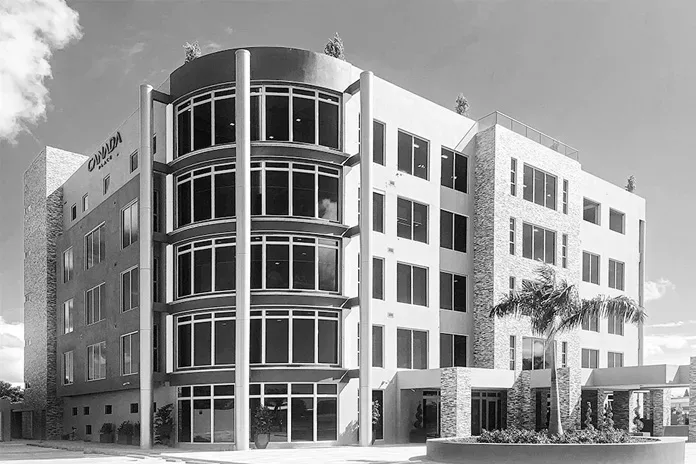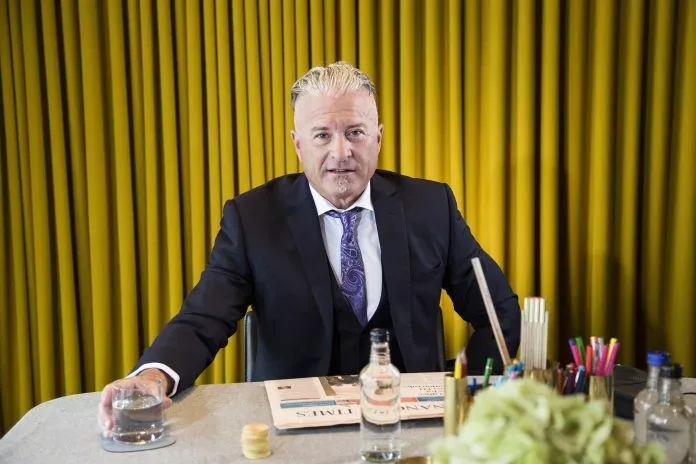News & Views
Calvin Ayre opens ‘most impressive building on the island’ deemed a modern green facility
The impressive five-story, Canada Place located in St. John’s, Antigua, is not only home to the Ayre Group’s various pioneering technological companies but serves as a beacon of inspiration for its employees and Antigua on a whole. Dubbed “The Greenest Multi-complex in the Caribbean,” Canada Place is a highly sought-after office facility, capable of housing several companies and up to 600 persons. As the Ayre Group navigates this COVID-19 new normal, with gradual resumption of work from office, building occupants found it easy to return to this environmentally friendly, state-of-the-art facility. This article serves as a fitting throwback to the building’s official opening in 2019. The article was written by Latrishka Thomas and published in the Antiguan Observer on November 25, 2019.
“This is now easily the most impressive building on the island, hands down. There is no other office complex on the island that could actually challenge Canada Place,” Prime Minister Gaston Browne said Friday of the newly opened Canada Place.
Business mogul Calvin Ayre on Friday, opened his global headquarters, which he said “shall be home for various pioneering technologies that, it is hoped, will make a significant impact on the economy of Antigua & Barbuda.
“In this regard, we have been steadily increasing our employment of Antiguan and Barbudan nationals and expect that our employment levels should approach 600 during 2020.”
The five-storey building, which is located close to Woods Malls, is a modern green facility.
Local media relations representative for the Calvin Ayre Group, Anika Potter, described one of the major features in Canada Place as being “our solar farm which is actually our car-park for our employees so they have covered parking and that I believe, transmits over 500 kilowatts of energy, so technically our building should be able to function solely on the solar farm, on solar energy”.
She said another key feature is “the fifth floor which is our employee lounge. It houses our indoor cafeteria, our outside eating area, a games room, our library for our staff to just be able to relax and just unwind.”
The media representative also revealed that there are many other amenities within the complex that promote energy efficiency.
“The building in and of itself is massive and when I say massive, I don’t necessarily just mean in size. I mean in all of the amenities, all of our kitchenettes are equipped with coffee machines and bottle less water coolers.
“So, what we’ve done, instead of just using the regular water cooler with a bottle we do filtered water through a UV system and that is what our employees use to drink so we don’t deal with water bottles. We are trying to have the building be able to operate on its own as well as minimizing our carbon footprint,” she continued.
And, according to Ayre, “greater reliance on renewable energy sources, such as solar and wind power, will redound to the benefit of humanity. I, therefore, fully endorse the government’s policy of seeking to transition from the use of fossil fuels to green energy. This magnificent complex is a symbol of this commitment to a pollution-free Antigua.”
In addition, the building, a “US $40 million investment into the Antiguan economy,” is equipped with a day care and gym which Ayre said is meant to ensure that all of the employees feel appreciated.
“We tried to create an environment where basically the employees feel valued. And I think in the presentation I made earlier (Friday evening) one of the statements that I made was about the fact that, unlike just about every other building I’ve seen in my life, the executive suites aren’t on the top floor.”
Prime Minister Browne, in addressing attendees during Friday’s opening ceremony, praised Ayre saying that “unlike other exploiters we have a true partner in Calvin Ayre who is conjointly with the government and people of Antigua and Barbuda to ensure the advancement of this beautiful twin island state”.
Calvin Ayre is a Canadian entrepreneur based in Antigua and Barbuda who founded the Ayre Group and Bodog entertainment brand and also manages other business entities on the island.
In 2000, Ayre launched online gambling company, Bodog, the success of which made him a billionaire and in Ayre’s speech on Friday he credited the success to “small but solid steps” saying that “the initial step taken by me in 2006 when I started business operations in Antigua has had several giant steps added to bring us to where we are today”.








